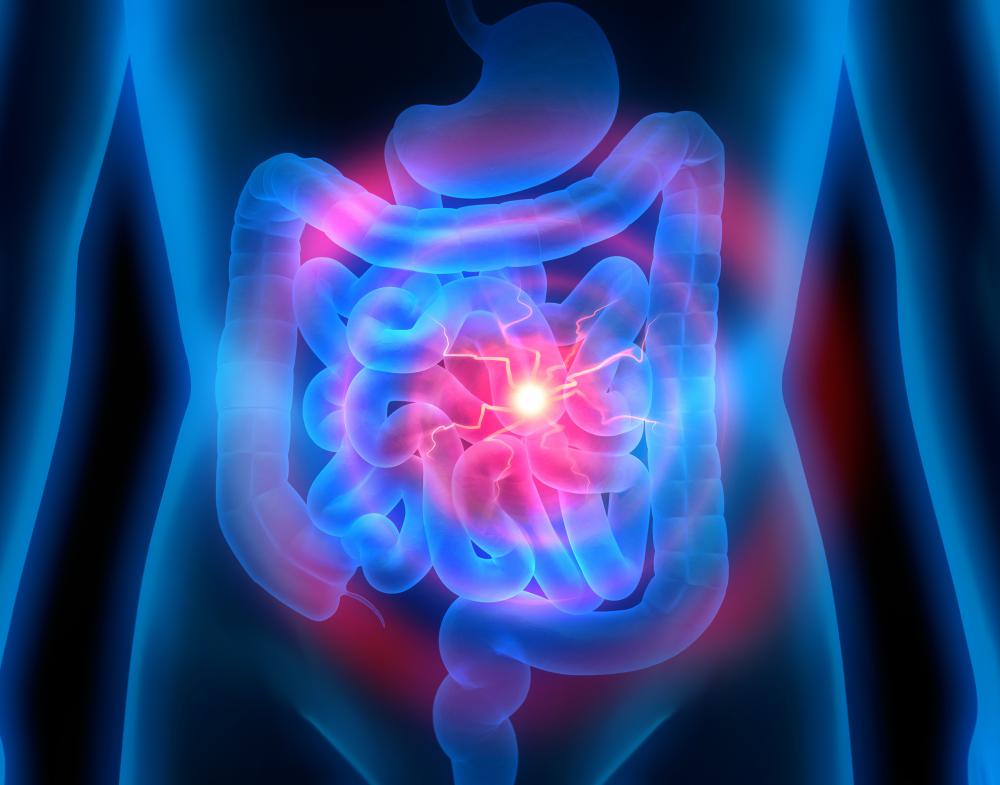At TheHealthBoard, we're committed to delivering accurate, trustworthy information. Our expert-authored content is rigorously fact-checked and sourced from credible authorities. Discover how we uphold the highest standards in providing you with reliable knowledge.
What is a Gastroscope?
A gastroscope refers to a type of medical instrument called an endoscope. This plastic, flexible tube is about 4 feet (1.22 meters) long. The gastroscope utilizes fiber optic technology that produces light to allow it to work like a camera. The physician uses a gastroscope to view the gastrointestinal tract. The gastroscope is useful in evaluating conditions of the esophagus, stomach and portions of the small duodenum or intestine. The scope may be used in the hospital or an outpatient setting, depending on the circumstances.
In addition to allowing the physician to view the structures of the gastrointestinal system, the gastroscope allows him to take tissue samples as well. This instrument contains a hollow tunnel that enables the doctor to obtain a biopsy and administer certain medications to treat various medical conditions. The scientific term for medical tests used with the gastroscope is esophagogastroduodenoscopy. This procedure, also known as EGD, is often performed when the physician suspects abnormalities in swallowing or with the small intestines or stomach.

A common use for the gastroscope is to determine the reason for gastrointestinal bleeding. In addition, the scope is useful in assisting the physician to determine the correct placement for a gastrostomy, or feeding tube. Prior to the procedure, the patient usually is given a topical spray anesthetic that numbs the throat. The anesthetic is given to suppress the gag reflex and allow for easier passage of the tube. Following the anesthetic, an intravenous medication is typically administered to help the patient relax.

After the physician has determined that the patient is sufficiently relaxed, he will slowly pass the scope into the oral cavity. With the back of the throat numbed from the anesthetic, he will pass the tube into the stomach and duodenum. The EGD is not generally painful, but it may initiate gagging despite the use of the numbing agent. After the EGD, the patient may have throat pain and feel slightly bloated.

Generally, this procedure is safe. As with any invasive medical procedure, though, risks are possible. Rarely, esophageal or stomach perforations can occur, as can vomiting. In addition, there is the risk the patient may experience adverse reactions from the numbing agent or sedatives. Typically, if vomiting or medication side effects do occur, they can be managed effectively and without incident. Usually when vomiting occurs, it is the result of the gag reflex being activated. This reaction is usually mild and transient.
AS FEATURED ON:
AS FEATURED ON:















Discussion Comments
I believe gastroscopes can contain a fiber optic, but newer ones are more likely to have a CCD video camera at the tip for better resolution.
A gastroscope was used on me when I had an endoscopy done for some abdominal pain I was having. At first they thought it might be my gall bladder, but those tests came back negative.
The next step was to have an endoscopy and a colonoscopy at the same time. They did find some gastritis in my stomach that was causing my problems. I took some medication for a few months and have not had any other problems.
I don't remember much about this simple surgery after I was given some anesthetic. I know it did not take long, and my throat was sore for a few days after the surgery from the scope. Other than that, there weren't any side effects.
I think it is amazing what a tiny camera can show that will help identify problems you may be having.
I recently had to have a laporoscopy, which uses a similar tool called a laporoscope, to look inside my uterus and surrounding areas in my abdomen.
It was a pretty simple surgery, and they did it to see if problems I've been having with my stomach and menstrual cycle could be pinpointed to something in my uterus.
I was told, though, that if they didn't find anything, I might have to have my stomach and bowels looked at, maybe using a gastroscope. If that does end up being the case, it's good to know that it is a similarly simple surgery most of the time.
Post your comments